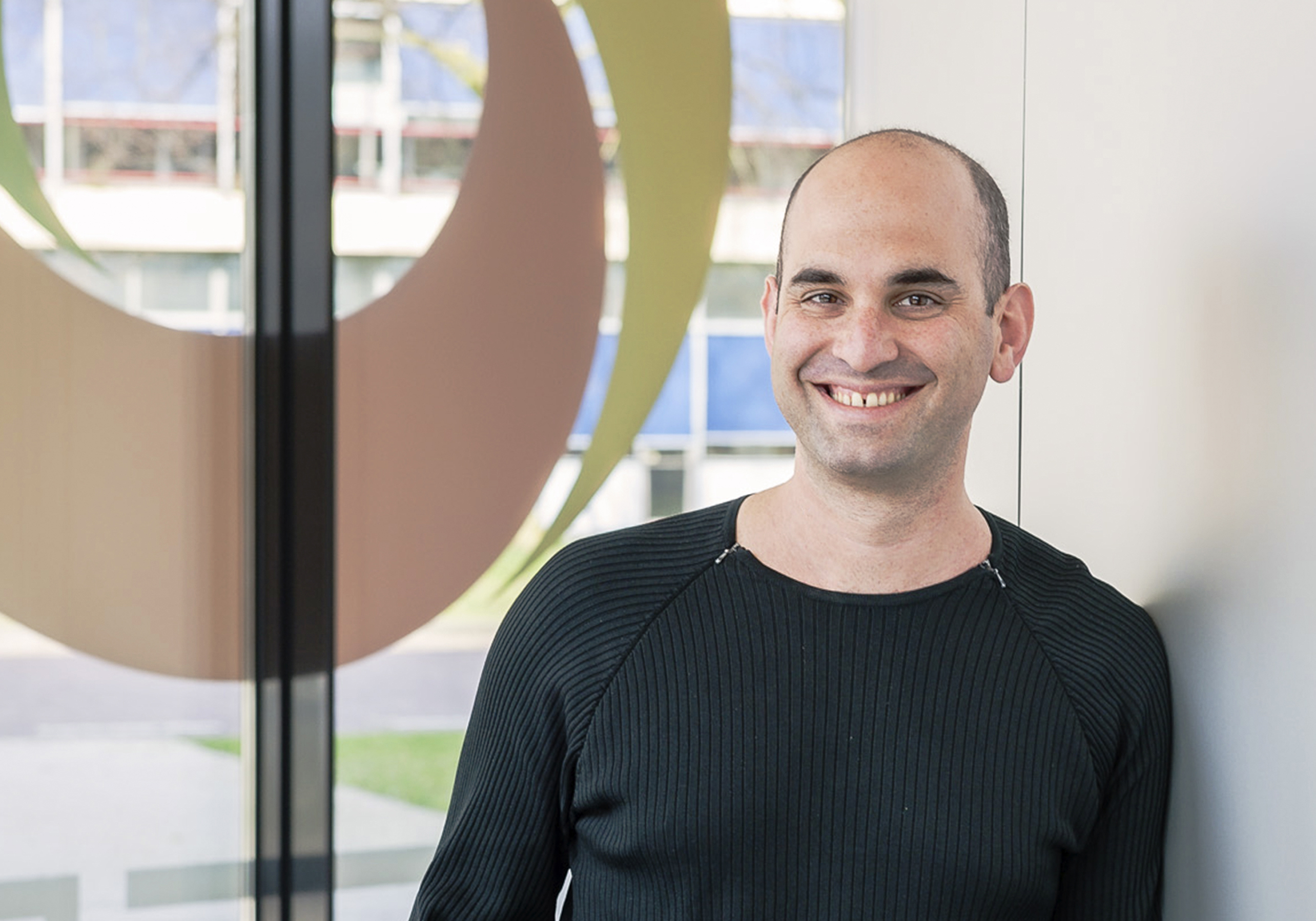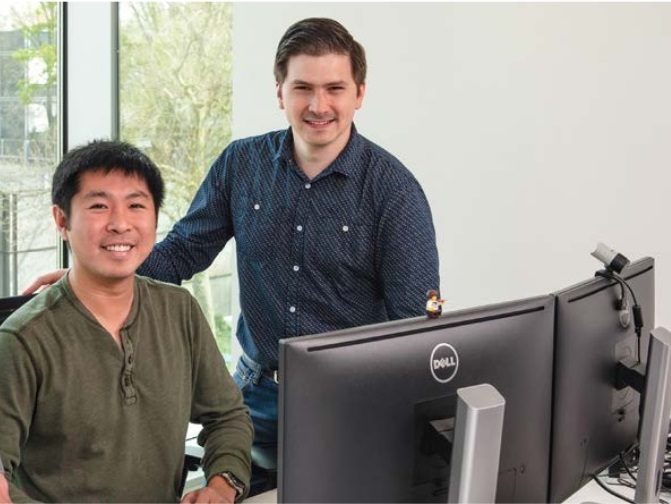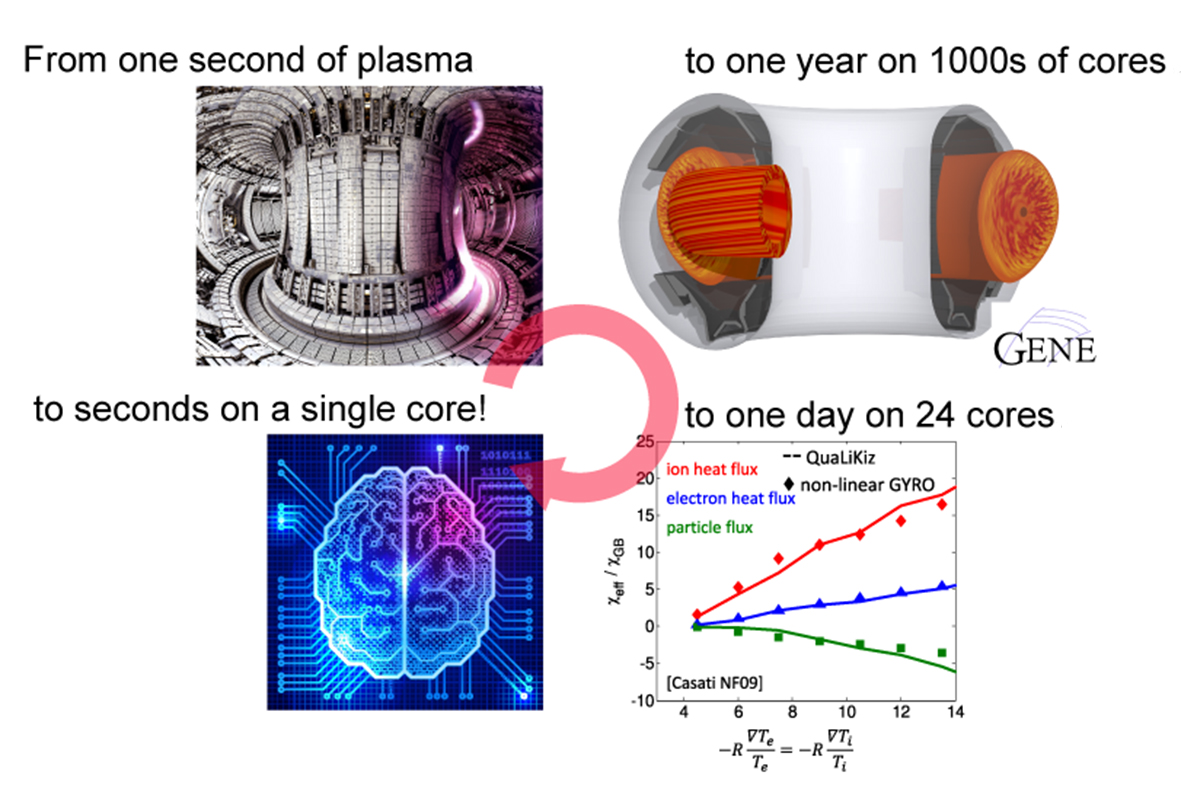Using machine learning is a promising trend in modelling the behaviour of the plasma inside a nuclear fusion reactor. DIFFER-researchers are pioneering very fast neural network models for plasma turbulence.

On the long road to a future commercial nuclear fusion reactor predicting the behaviour of the super hot plasma inside the reactor is one of the crucial building blocks. This building block includes, among others, understanding the heating of the plasma, its magnetohydrodynamic properties and its turbulence. It is for the turbulence part that DIFFER researchers Jonathan Citrin, Aaron Ho and Karel van de Plassche recently achieved a great speed-up of the modelling time by using neural networks, a specific type of machine learning.
Future is great
“The future of machine learning in modelling fusion is great”, says Citrin, head of the Integrated Modelling and Transport group at DIFFER. “My long term vision is that we will use neural network surrogates for all sub-models needed to simulate the plasma that presently form computational bottlenecks, for which no other model reduction is feasible. My group is pioneering a neural network model for turbulence, but I am confident that the same technique can also be used for modelling additional physics components.”
Replace reduced-physics models
Physicists Karel van de Plassche and Aaron Ho both developed neural network models for plasma turbulence. They demonstrated that their neural network models are accurate enough to replace the currently used reduced-physics model. That model is itself a simplification of the full physical equations that describe the plasma’s behaviour, but is still accurate, and is fast enough to generate extensive training sets. The network is trained on input and output data of the reduced-physics model.

Photo: DIFFER
Ho built a model that was trained on data of the EU JET-reactor in the UK. It is 10.000 times faster than the original turbulence model and is no longer the bottleneck in reactor modelling which became 100 times faster than before. “We also demonstrated that our models have value for the people in the control room”, tells Ho. “We simulated a scenario fast and accurate enough so that if the experimentalists had a question on scenario design, we were able to give them the answer fast enough. They were impressed with the speed.” Ho successfully defended his PhD-thesis on March 17 2021.
Speed-up: factor 100.000
Van de Plassche developed a model that is slightly less accurate than Ho’s model but can be used on various reactors, such as the future ITER. Furthermore, it achieved a speed-up of a factor 100.000 as compared to the reduced-physics model. “There is only one other group in the world that also developed a neural network model like ours”, says Van de Plassche. “We want to get as close a possible to a real-time simulation of the plasma, bridging 12 orders of magnitude in calculation speed from simulating the full physical equations.”
On April 1 2021 a new European project will start that organises the full integrated modelling of the plasma. DIFFER scientists will play an important role in that project. Citrin: “Thanks to the work of Aaron and Karel our neural network modelling is strongly embedded in the European integrated modelling effort. We are looking forward to this new cooperation.”
The new cooperation might also prepare the way to using the neural network models of the DIFFER-researchers in ITER, the largest experimental fusion reactor in the world that is presently being built in Cadarache in France. “My ultimate dream is that our neural network models will contribute to the way operators in the reactor control room can do their job”, concludes Citrin.

More information
Group web page: Machine learning for control oriented models
Nature perspective by Jonathan Citrin and colleagues: The data-driven future of high-energy-density physics
Text by Bennie Mols
Go to the News page.